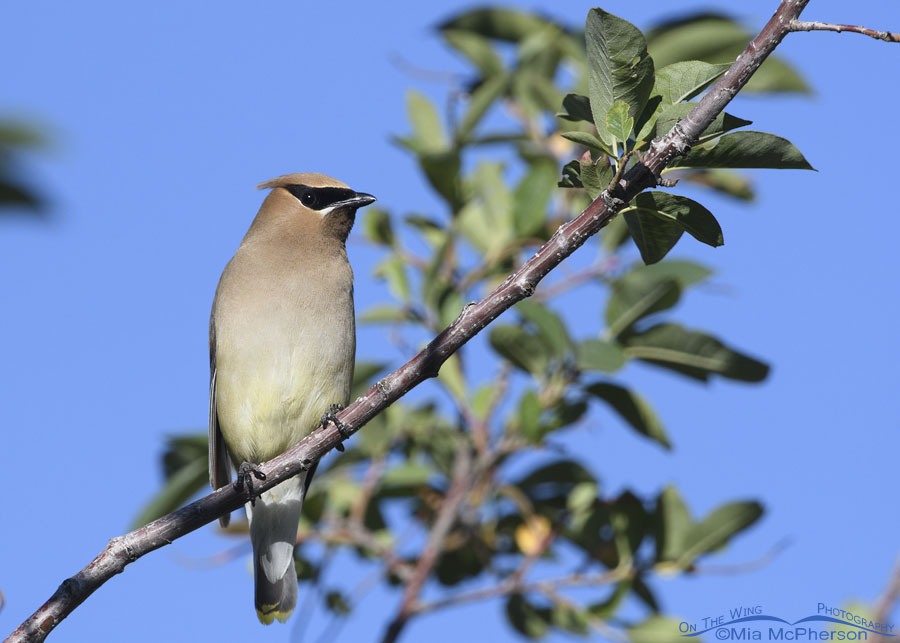 Cedar Waxwing on a Chokecherry perch – Nikon D500, f7.1, 1/1250, ISO 500, +1.0 EV, Nikkor 500mm VR with 1.4x TC, natural light
Cedar Waxwing on a Chokecherry perch – Nikon D500, f7.1, 1/1250, ISO 500, +1.0 EV, Nikkor 500mm VR with 1.4x TC, natural light
On a recent trip up into the Wasatch Mountains I had a cooperative Cedar Waxwing who was perched on a branch of a chokecherry tree with blue sky behind it. Of course I wanted to take photos of the beautifully masked waxwing.
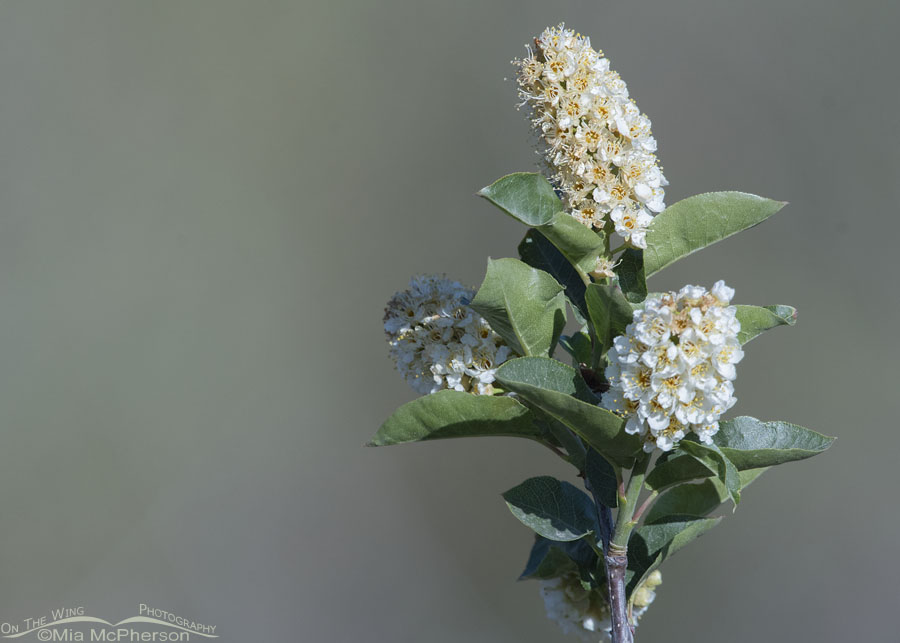 Chokecherry blooming in foothills of the West Desert – Nikon D500, f9, 1/1000, ISO 640, Nikkor 500mm VR with 1.4x TC, natural light
Chokecherry blooming in foothills of the West Desert – Nikon D500, f9, 1/1000, ISO 640, Nikkor 500mm VR with 1.4x TC, natural light
Chokecherry trees provide food for Cedar Waxwings and other birds when their fruits ripen. Me? I love the scent of the chokecherry trees when they are in bloom. They only bloom for a short period of time but their fragrance stays with me year round. All I have to do is look at one of my photos of chokecherries in bloom and I can smell them. Their scent is strong, sweet with mix of almond and honey. It is a delicious aroma that tickles my senses.
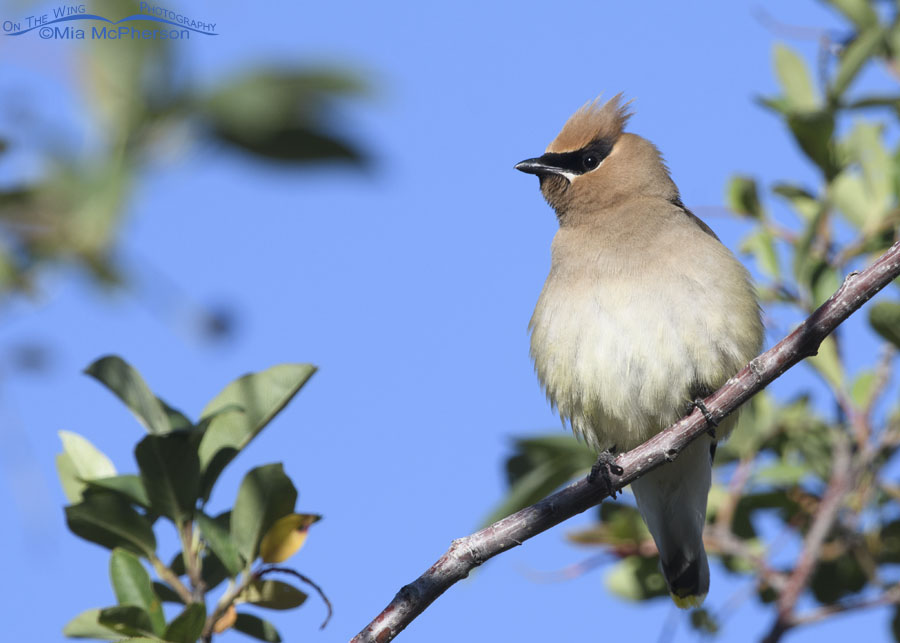 Fluffy Cedar Waxwing in a Chokecherry tree – Nikon D500, f7.1, 1/1000, ISO 500, +1.0 EV, Nikkor 500mm VR with 1.4x TC, natural light
Fluffy Cedar Waxwing in a Chokecherry tree – Nikon D500, f7.1, 1/1000, ISO 500, +1.0 EV, Nikkor 500mm VR with 1.4x TC, natural light
I had heard the waxwing before I saw it perched on the chokecherry branch and I hoped it would stay long enough for me to get a nice series of images of it. The waxwing did and it even fluffed its downy feathers up while I watched.
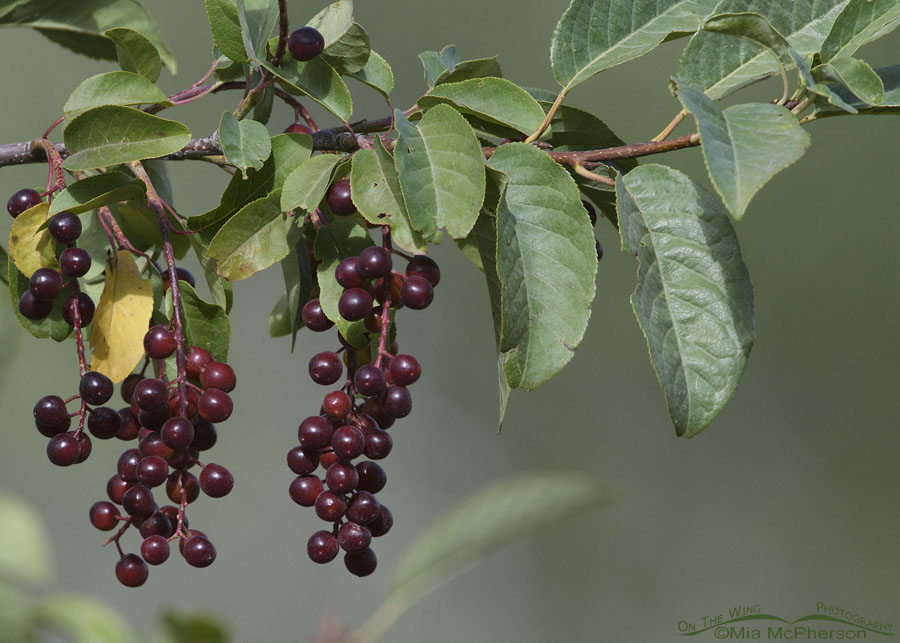 Ripening Western Chokecherries – Nikon D500, f10, 1/640, ISO 640, -0.7 EV, Nikkor 500mm VR with 1.4x TC, natural light
Ripening Western Chokecherries – Nikon D500, f10, 1/640, ISO 640, -0.7 EV, Nikkor 500mm VR with 1.4x TC, natural light
It doesn’t take long after the blossoms drop before fruit begins to form on Chokecherry trees when we have had enough moisture. Last year very few fruits formed but this year there has been an abundance because we have had some moisture. These fruits weren’t quite ripe when I photographed them but they were getting close.
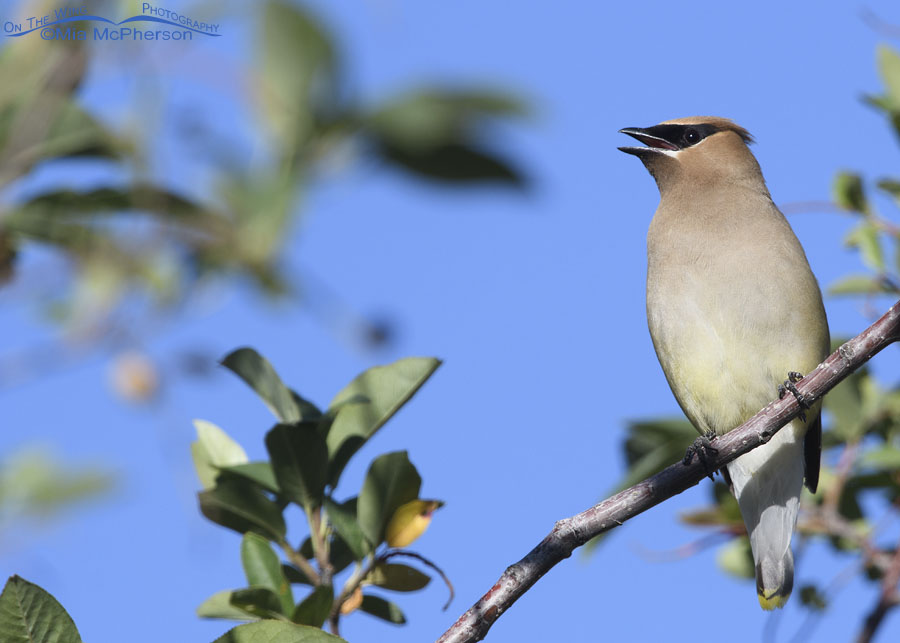 Cedar Waxwing calling from a Chokecherry tree – Nikon D500, f7.1, 1/1000, ISO 500, +1.0 EV, Nikkor 500mm VR with 1.4x TC, natural light
Cedar Waxwing calling from a Chokecherry tree – Nikon D500, f7.1, 1/1000, ISO 500, +1.0 EV, Nikkor 500mm VR with 1.4x TC, natural light
Back to the Cedar Waxwing:
While I was photographing the waxwing it began to call to answer other waxwings in the area. Not long after this image was taken the waxwing lifted off to join the others that were on the wing and flying past.
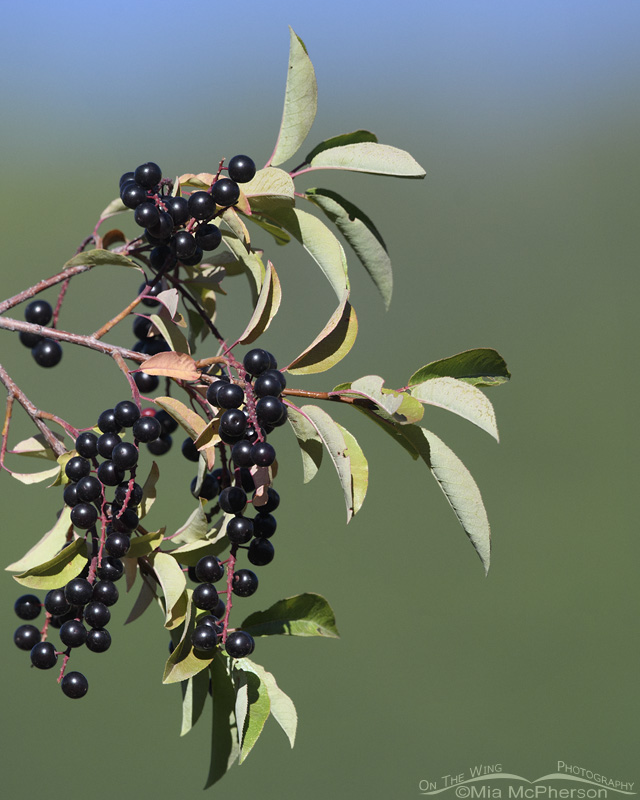 Ripe Chokecherries in Morgan County – Nikon D500, f7.1, 1/2000, ISO 640, -0.7 EV, Nikkor 500mm VR with 1.4x TC, natural light
Ripe Chokecherries in Morgan County – Nikon D500, f7.1, 1/2000, ISO 640, -0.7 EV, Nikkor 500mm VR with 1.4x TC, natural light
These chokecherries were photographed six days after the ones in the fourth photo in this post in the same general area. When they are ripe they are a dark purple color and in some light they look almost black. I’ve tasted ripe chokecherries. They are very tart and juicy but not something I’d want to eat more than one of in the field. I’ve read that they make great jam. I’ve never tried making that. I prefer to leave wild fruits and berries for the birds and animals that need them.
Life is good.
Mia
Click here to see more of my Cedar Waxwing photos plus facts and information about this species. Click here to see more of my wildflower, shrub and tree photos.


My favorite [non-raptor] bird cruising the chokecherry trees. How cool is that! Great shots. Thanks Mia.
Gorgeous. And we have neither the bird nor the fruit…
Your wonderful detail is amazing, Mia!
On of my favorite birds and chockcherries too!
Gorgeous…..Cedar Waxwing (especially) and Chokecherry blossoms & fruit.